Portable Fridge/Freezer Buyers' Guide

THE ESKY may still have a home at many campsites, its simplicity outgunning the need for power points and solar panels, but with the proliferation of power-management and dual-battery systems minimising the frequency of flat batteries, there is now a wide choice when it comes to high-tech portable refrigeration. The portable fridge plays a crucial role on any trip, be it weekend escape or 12-month pilgrimage from Cape Byron to Steep Point, as it keeps food fresh and beers cold.
Swing into any campsite these days and you’ll note the fridge is but one of many technologies in use; without doubt camps will be illuminated by the latest LED lights and you’ll spot kids neglecting nature for their tablets and mobile phones … parents too.
With this ever-growing reliance on technology when off the grid, it’s obvious that your 4x4 needs to be set-up to cope with charging said devices, while not draining the starting battery.
The thing with a 12-volt fridge is, it needs to be constantly on so that food stays crisp and liquid gold stays ice-cold. We chat to the folks who know this better than most, from Ironman 4x4, Evakool, myCOOLMAN and ARB. Let’s get stuck in.
Types of portable fridges
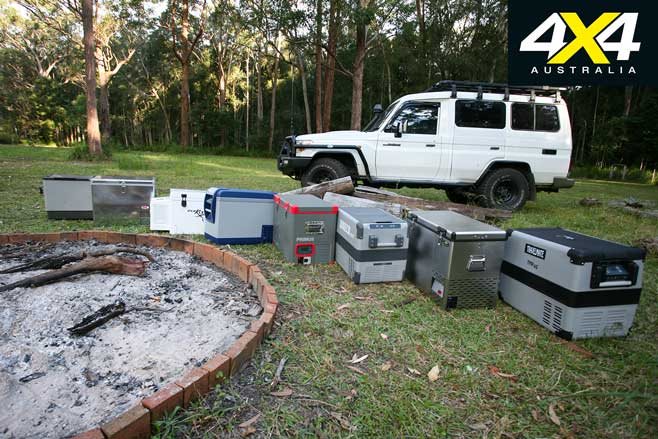
PEOPLE need to understand there are different types of fridges; you have thermoelectric, three-way and compressor fridges. Each work differently, and some are more efficient than others,” explains Ironman 4x4’s director of 4x4 products, Adam Craze.
You can’t buy a thermoelectric cooler and expect the same cooling functions as a three-way or compressor style. A thermoelectric ‘cooler’ can’t reach the same high and low temperatures of a three-way or compressor fridge, recording a much more limited temperature range. And, unlike the other two options, a thermoelectric cooler doesn’t cycle on and off. Generally, they’re a cheaper option.
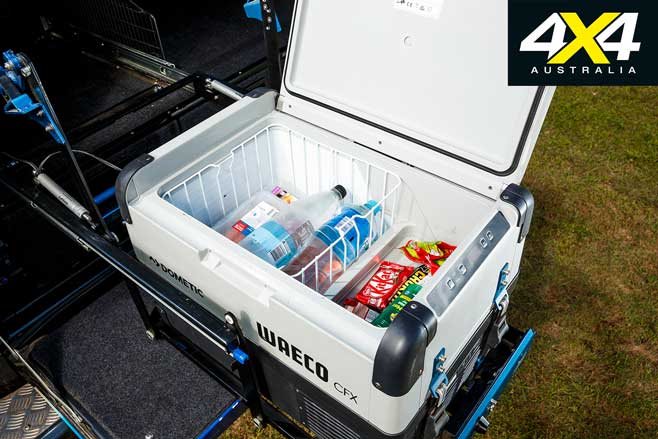
The benefits of a 12-volt compressor fridge include a lower current draw, they can be left running for longer periods, and they can be left running in a vehicle, whereas “a three-way fridge must be removed or have external vents when on gas,” Craze adds. Plus, you don’t need to hire a certified gas fitter to certify a fixed-mount compressor fridge. On that, there’s also no exposed flame.
Another benefit of a compressor fridge is that the temperature can be controlled on both DC and AC voltages. “Compressor fridges can run off existing dual-battery systems, whereas three-way fridges aren’t as efficient on DC battery power, meaning you would need to carry gas around with you,” says Evakool’s CEO Marc Jarvis.
A compressor fridge also maintains colder temperatures than a three-way fridge. “A compressor fridge is able to cool from ambient temperature by 50°C, meaning if it was 32°C your fridge can get to -18°C,” says ARB’s Shannon Diedrich. “However a three-way fridge is only able to manage 25 to 30°C from ambient, meaning in the above scenario, the three-way would only reach between 2 to 7°C.”
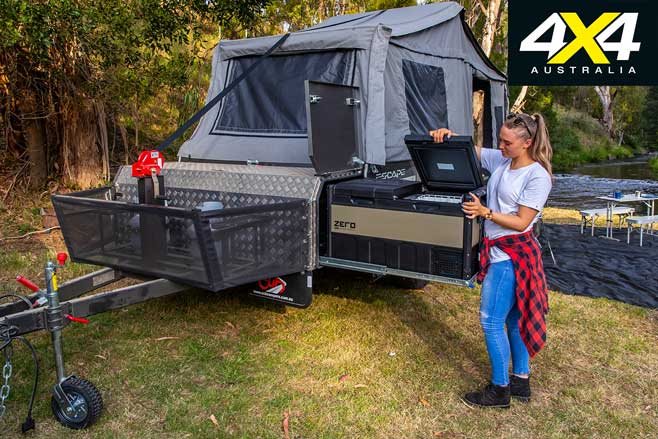
Another advantage of compressor fridges is they can be mounted on angles and can operate on uneven terrain. Three-way fridges, on the other hand, must stay level during operation so as not to affect the gas-flow cooling system.
“Generally speaking for a portable fridge and for my needs, the compressor-style is the way to go,” says Adam Craze.
Portable fridge sizes
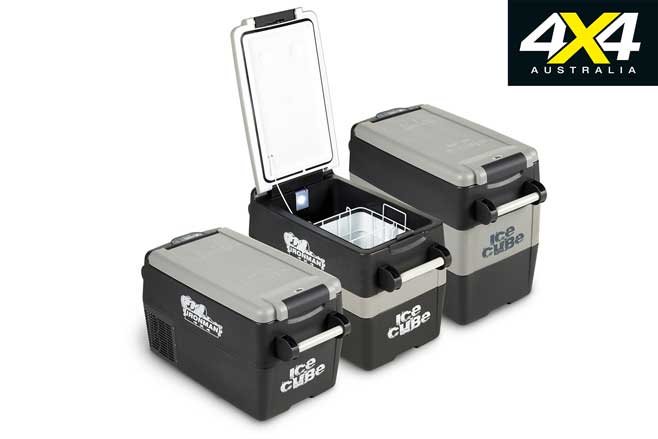
FINDING the ideal fridge to keep your beers cool is limited by many factors, none more so than space. Depending on your rig, what you pack, and your individual setup – perhaps you head bush sans roof rack, for example – it can often be difficult to find ample space for large items.
A neat design attribute that can also save space are flush-mounted carry handles. “These nullify potential breakages and allow for extra packing space,” says Darren Sloan, product manager at myCOOLMAN, of the brand’s sturdy flush-mount handles. Remember, sturdy, foldable, flush-mount handles can also double as tie-down points.
There’s another way to maximise space in your cargo area, and that’s by mounting the fridge on a fridge slide with a fridge barrier. This not only opens up space around it for more storage, but it also keeps it secure and makes accessing contents a lot easier.
Portable fridge power ratings
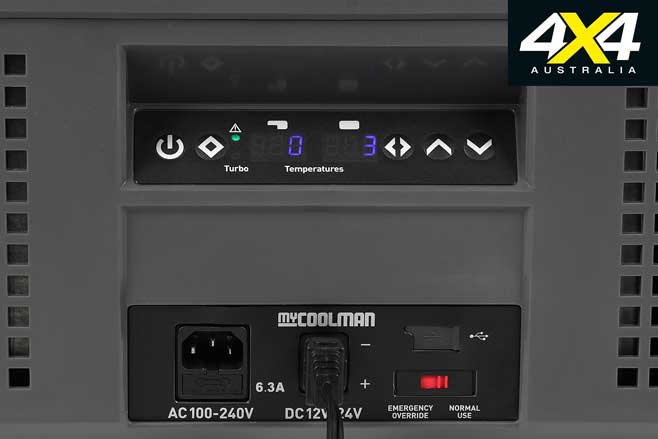
ONCE settled on the size and style of portable fridge that best suits your needs, the next vital aspect that needs to be researched is how much power the fridge will use to maintain optimum cooling. We’ve all seen and heard the terms 12V, 24V and 240V-mains bandied around when talking about fridge/freezers, and multi-voltage (being able to use 12V, 24V or 240V) functionality is a key cog in making a system more user-friendly, by enabling different means of power options. Also look for multiple 12V/24V DC entry points for convenience.
A fridge’s current draw is measured in amps per hour, and the specs sheet will typically read something like 12V = 1.2Ah, which means the fridge will draw 1.2amp per hour over a 24-hour period. A portable fridge will typically run somewhere between 1.0Ah and 5.0Ah. “Low power is key!” says Adam Craze.
Theoretically you could run your 12V fridge using your vehicle’s starting battery, but we’d strongly recommend you don’t if you don’t want it to go flat. Instead, the smarter choice is to opt for a dual-battery system and run all of your electrical gadgets off the auxiliary battery.
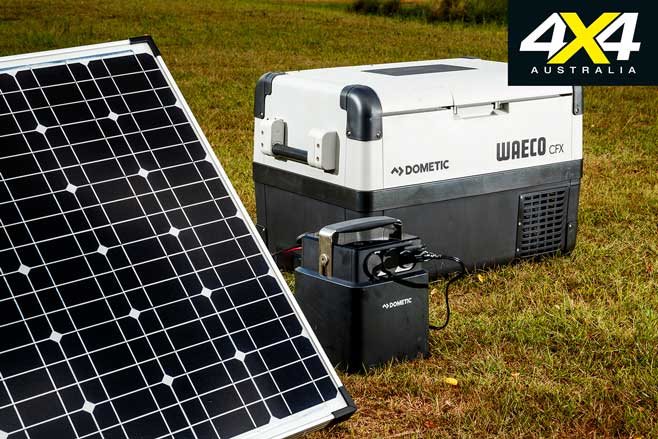
As well as your vehicle’s alternator, solar power is also a great option to maintain charge of the auxiliary battery.
Battery Management Systems such as Redarc’s Manager30 are also handy, as they monitor and manage how much juice is being delivered to accessories and ensure batteries stay alive. Some fridge/freezers also have Bluetooth and/or Wi-Fi connectivity, which allows the consumer to easily monitor the voltage of a battery, as well as cabinet temperature. Some of these also offer remote control.
A fridge will draw plenty of power while cooling a warm cabinet, so it pays to be smart with how you power it up. For example, run the fridge on 240V power before you leave on a trip, so that when it’s switched to 12V power it’s already cool. Plus, instead of loading it with room-temp drinks, chuck the drinks in the fridge at home to get them nice and cool before loading them into the portable fridge. Using a freezer brick and insulated cover won’t hurt either.
How to power a portable fridge
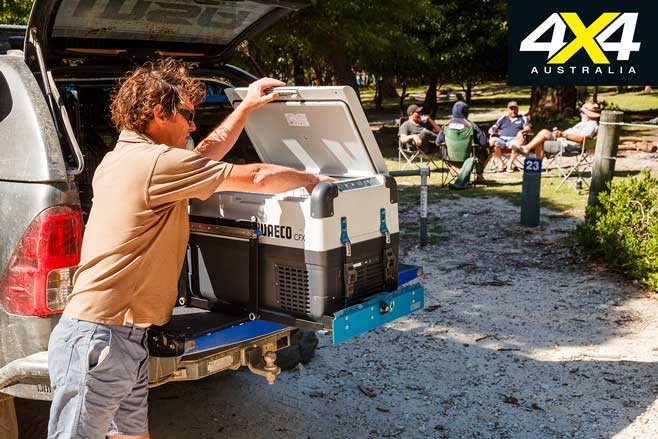
IF YOU’VE ever been camping and been haunted by the nagging thought that your fridge/freezer (and every other electronic gadget abuzz) is draining the battery, then these words should help you sleep a bit better: low-voltage cutout protection.
Ensure the fridge/freezer has built-in battery protection and it’ll curb your concerns of ending up with a dead battery.
Fridge/freezers, like those from Ironman, ARB, myCOOLMAN and Evakool have inbuilt battery protection with low-voltage cutout points, some that are user adjustable.
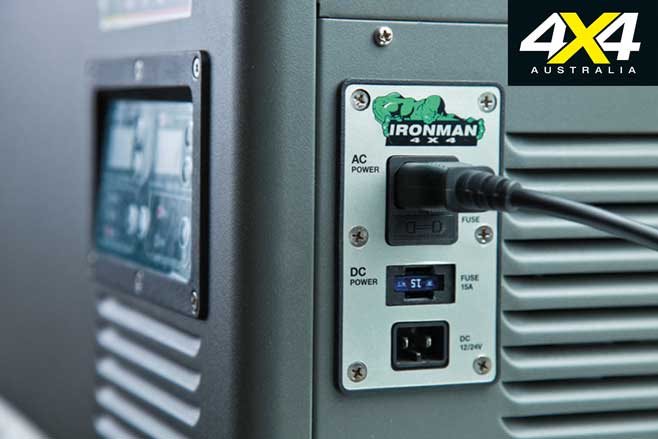
“Ensure your fridge has an integrated battery protection system, which will read the voltage of the battery and based on your setting (high/medium/low) will automatically cut power to the fridge if the battery reaches that voltage,” advises Shannon Diedrich.
The myCOOLMAN range of fridges has three-stage battery-protection levels (Lo, Med and Hi) cutouts to cater for different power-source setups.
“For a single battery powering the fridge select high; for reliable dual-battery setups select med; for lithium set-ups select low,” explains Darren Sloan.
Dual- or single-zone portable fridges?

WHILE some single-zone fridges will be supplied with a divider to keep contents organised, true dual-zone fridges have two separate compartments so one can be used as a fridge while the other can be used as a freezer. The alternative for those who want to refrigerate some items and freeze others is to fit their vehicle with two smaller fridges rather than one large one.
Portable fridge design elements
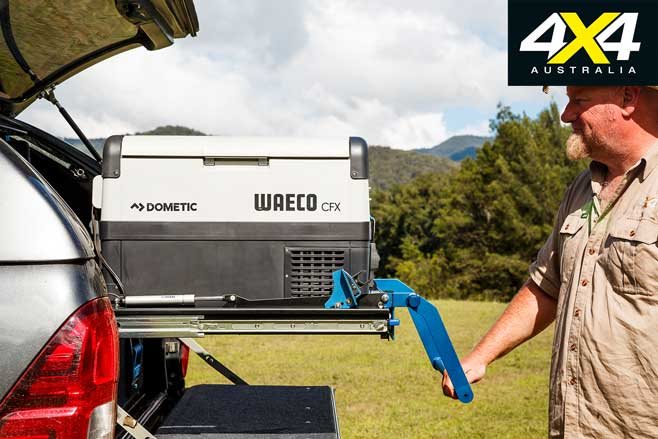
PORTABLE fridges have evolved to a point where they are near-on indestructible. Hell, some of the rough-and-tumble tracks we tackle as four-wheel drivers mean fridges have to be built to survive a beating. To this end, solid construction is high on the essentials list for fridge manufacturers.
The materials used in the construction of the fridge itself also have an impact on power consumption. Stronger materials with greater insulation properties mean the compressor doesn’t have to work as hard to maintain the optimum cooling temperature.
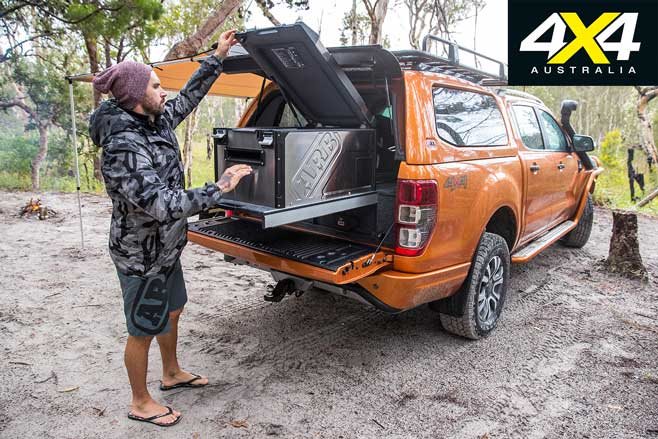
“One thing that has a major influence on power is the casing and, more importantly, the insulating properties of that casing,” explains Adam Craze. “The better the fridge can keep the cool in and the heat out, the more efficiently the fridge will run.”
All of the respectable brands are constructed in such a way to minimise the power draw of their units. Evakool products, for example, are designed and built specifically for Australian conditions using polyurethane, fibreglass and metal. Ironman 4x4 utilises rubber-mounted compressors, metal bodies and quality mechanical internals.
ARB’s range is equally robust: “ARB’s range of fridges feature a steel construction and robust poly extrusions, which keep the fridges substantially capable,” says Shannon Diedrich. And myCOOLMAN also utilises steel in the sidewalls, as well as eight corner protectors with stainless steel mounting screws and robust ISO-style hinges.

Other features to look for include insulated covers, easy-to-see temperature control gauges, and smart layouts of interior compartments. On this point, the capacity for upright storage is also something to contemplate, as Darren Sloan explains: “This allows you to store open milk cartons and wine bottles, with the top level basket having a section of the floor that can lift up to allow for this upright storage. Or (you can) leave the flap down to utilise an entire top level of separate storage.”
Some brands even have a handy bottle openers on their fridge/freezers. And, while it might seem a no-brainer, ensure the fridge/freezer has an internal light to find that midnight snack.
Can a portable fridge be left exposed to weather?

STRAP a fridge/freezer onto an open tub and it’ll probably survive sun, rain and mud, but some will fare better than others in the long run. With plenty of experience touring to remote places, Adam Craze says Ironman’s range can be exposed to the elements. “We have them on backs of trays and in boats,” he says. “My two 50-litre Ironman 4x4 fridges have lived on the tray of my dual-cab for two years, and we did four months in the Kimberley with no issues.”
In saying that, it still makes more sense to store them in a well-ventilated space and/or a shaded area, as Evakool’s Marc Jarvis explains: “Your fridge will run better if it’s kept cooler and out of direct sunlight, as it doesn’t have to work as hard.”
“It depends on the fridge,” adds ARB’s Shannon Diedrich. “The ARB Elements fridge, for example, is weatherproof, so it can be left in an open tub or tray without a problem. However, other fridges will need to be kept in a dry place.”
A better idea is to securely house the fridge beneath a canopy, in a camper, or in the back of a wagon. Not only will this protect it from prying eyes, it’ll save it from the wear-and-tear of constant abuse from the harsh Aussie elements – protecting the fridge and minimising power draw.
Powering a portable fridge with a power pack
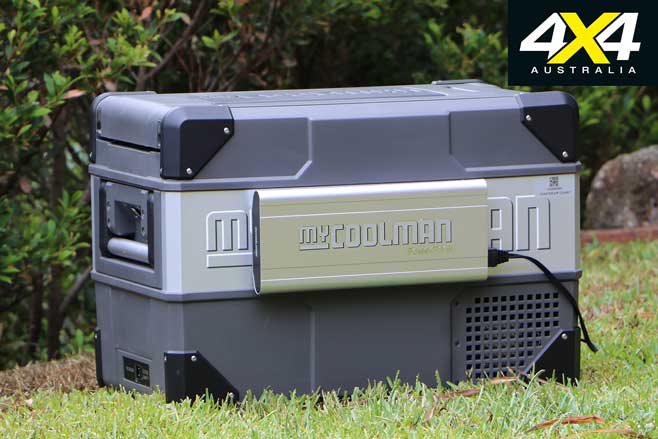
THE myCOOLMAN Power Pack is a lightweight (just 1.65kg), portable device that can keep a 12V fridge chugging along via 12V DC inputs. The Power Pack utilises lithium-ion battery technology and features a magnetic base, so it can ‘stick’ to the side of any myCOOLMAN fridge it’s powering.
myCOOLMAN says the Power Pack can be charged from 0 to 100 per cent in five to six hours, and it features short-circuit protection, over-current protection, over-charging protection, over-discharge protection and over-heat protection. Theoretically, the 15Ah Power Pack can power myCOOLMAN’s 30-litre Transporter fridge for up to 18 hours.
“Using the MyCOOLMAN Power Pack is the easiest way to get going. Just plug, attach and play! No need to connect to the car or home power outlet,” Darren Sloan explains to us.
Buying a portable fridge from an unknown brand

MOST of us have dipped into the world of online shopping to save a penny or two – which is fine, mind you – but there are issues you’ll encounter when buying an essential item like a portable fridge … something you don’t want breaking down in the middle of the Simpson Desert.
Buying from an unknown brand without a reputation in the industry can lead to problems due to the use of unknown components, and you’ll have no aftermarket support and no warranty if something goes wrong. “You risk buying a knock-off fridge where they’ve cut corners,” adds Marc Jarvis.
Trusted brands will list in detail every component fitted to their products. Plus, extensive warranties will be offered on components and the fridge itself.
You’ll also find a lot of superseded models online, with less features and lower warranty periods; so it’s best to navigate to respected websites for the latest and greatest units. “You also want genuine factory-approved accessories, not cheap inferior accessories,” adds myCOOLMAN’s Darren Sloan.
Basically, it pays to use common sense. If you recognise the brand and it has a trusted reputation, you should be good to go. “Some major retailers have their own eBay accounts with good deals – these are safe,” advises Marc Jarvis. “But if the brand is not majorly known, I would steer clear.”
As mentioned, and we can’t stress this enough, it’s important to buy from a brand that provides support when it comes to servicing, parts and back-up. For example, look for brands that have distributors all over Australia that can assist customers if something does go wrong, or if you have an accident and break something.
So, how much are you going to need to shell out for a quality unit? Well, there’s plenty of variety, and you’re going to have to swipe the credit card for something with a few more digits to ensure you get a reliable, honest fridge. For comparison’s sake, here’s a quick pricing guide for a selection of similar-sized fridge/freezers: Evakool 40L Fibreglass (from $1299); Ironman 4x4 65L Icecube (from $1300); ARB 69L Zero (from $1599); myCOOLMAN 60L All-Rounder (from $1345); and Thunder 60-litre (from $1064).
“You get what you pay for,” adds Darren Sloan.
Installing and caring for your portable fridge
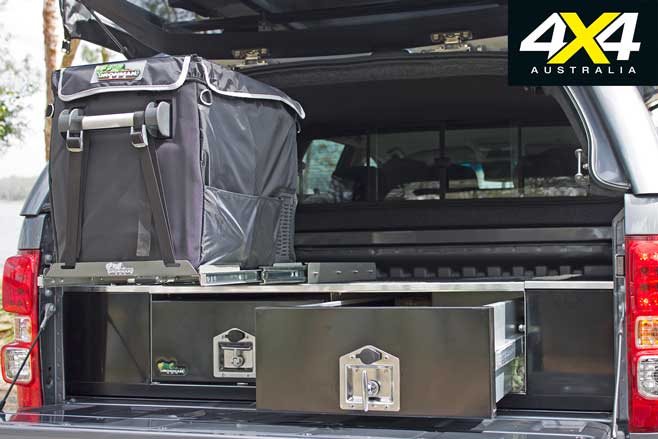
A GOOD power supply, in conjunction with good power cables, is essential when installing a portable fridge in the back of your 4x4.
“Installing your fridge is as simple as plugging it into a 12V connection and bolting it down to secure it,” says Shannon Diedrich. “However, if you want to run it via an auxiliary battery, unless you have electrical/12V experience, we would recommend getting a professional to fit it for you.”
Marc Jarvis adds that if you’re handy with the tools, fitting a 12V fridge and/or a fridge slide and drawers shouldn’t create too many problems. “Just wear/use the appropriate safety equipment and follow the manufacturer’s install guideline and you can save yourself a lot of money,” he says.
View our Range of Portable Fridges/Freezers here.
Article Credit - WhichCar

